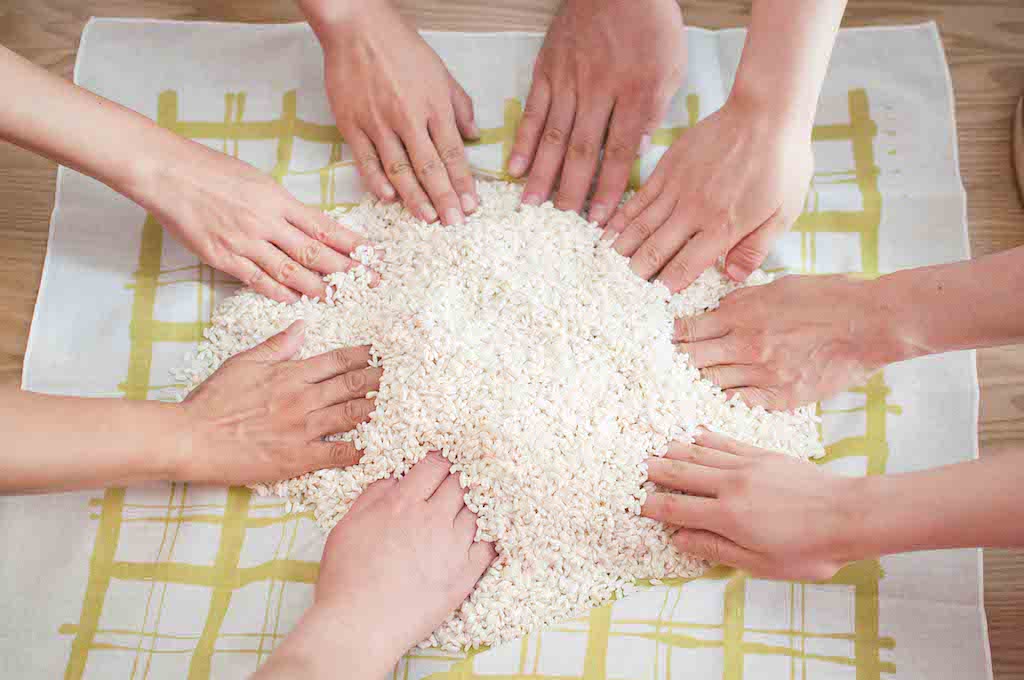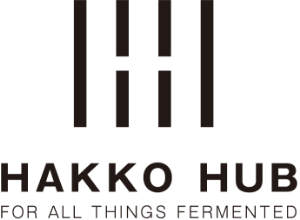In the previous issue, we gave you a quick summary of what koji is.
I hope this has given you an impression of what to expect. In the future, I will continue to write such overviews and articles focusing on a single topic.
In this article, I would like to talk about why we make koji.
The main productive purpose of cultivating rice, wheat or soybeans to make koji is to use their enzymes.
As I mentioned in the previous article, koji has the property of producing various enzymes such as protease, which breaks down proteins into amino acids, amylase, which breaks down starch into sugar, and lipase, which breaks down fat into fat, and many more.
Each of them, depending on the ingredients they are combined with, creates a fermented taste, a sweetness, a depth of flavour and a complexity. In other words, it makes it taste better. For instance, in the production of miso, the fermentation and decomposition of soybeans, which are not easily digestible, makes it easier for the human body to digest and absorb the nutrients. Moreover, the fermentation process makes it possible to preserve the product for a long time. Fermentation does not spoil. The use of koji in the production of fermented foods is a good thing.
Using koji to make fermented food is therefore reasonable for us. In Japan, the harvest of rice and other crops in autumn is followed by the production of fermented foods such as miso, soy sauce and sake in winter. This is called “Kanjikomi”. The art of fermentation has always been a part of the Japanese way of life, as a way of farming according to the climate and storing the natural bounty of the winter harvest for a long time.
Nowadays, more and more people want to make their own miso and other fermented foods from scratch, and the koji making process, which is essential for this, is being re-evaluated by the general public.
For us Japanese, this process is not just about rethinking fermentation techniques, but also about rethinking the simple and honest way of life we used to lead, the gratitude and joy that can be gained from making things by hand, and the value that has been lost in modern life.
For example, in Japan there is a culture of cherishing every grain of rice. We don’t want to waste even a single grain of rice from the rice we have worked so hard to grow. This is not so common outside of Japan and I think it is something special. When we make koji, we do not want to waste even a single grain of rice, so we work carefully from washing and soaking to the end of the koji making process, making sure that nothing is spilled. Even after the rice has become koji, it cannot be eaten straight away, it has to be mixed with something else, fermented and stored for months or even years, so it is natural that we do not want to waste it.
However even in Japan, we eat ready-made food, we rely on convenience, and the custom of making things by hand is much smaller than it used to be. We have lost the sense of respect for nature’s bounty, throwing away what we have spent so much time making from the earth because it is left over.
Now, starting with miso making, koji making and other related handmade fermented food production teaches us to appreciate things once again.
I invite you to try making koji from scratch. Just knowing how much goes into the first three days can change the way you look at Japanese fermented foods and the way you value the culture.




